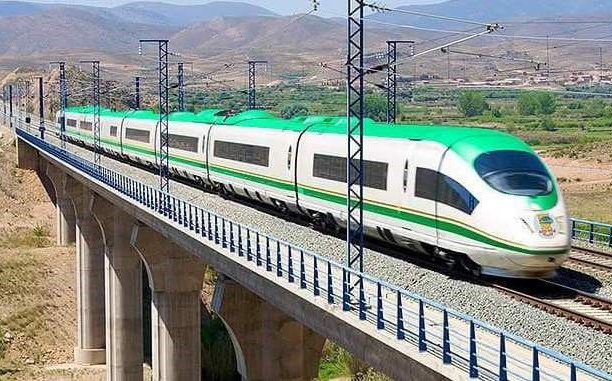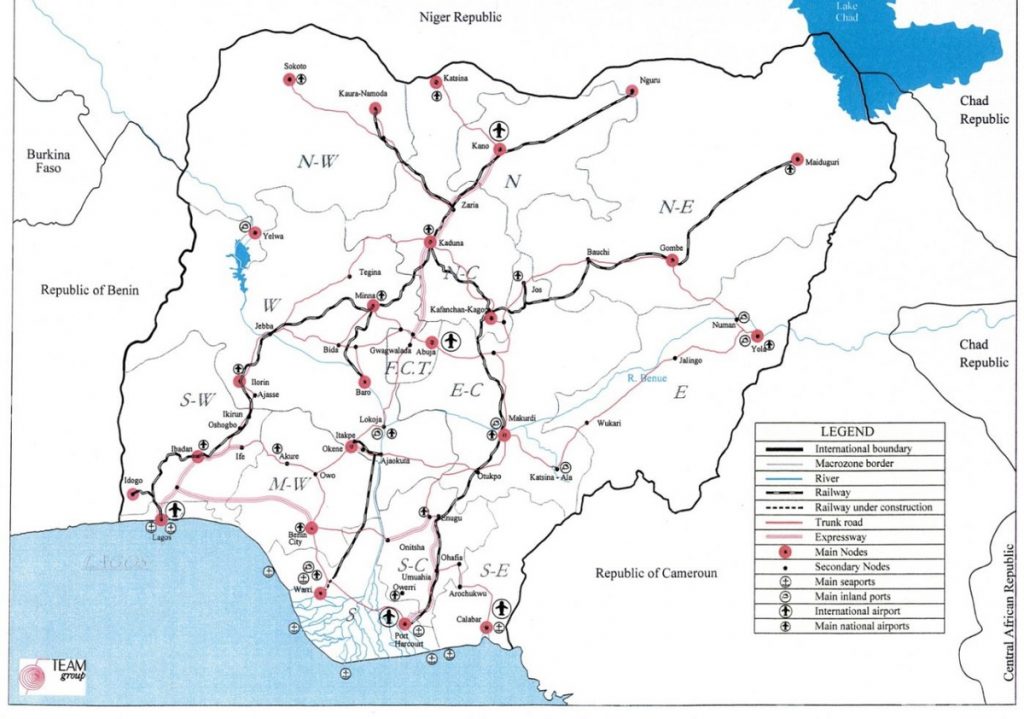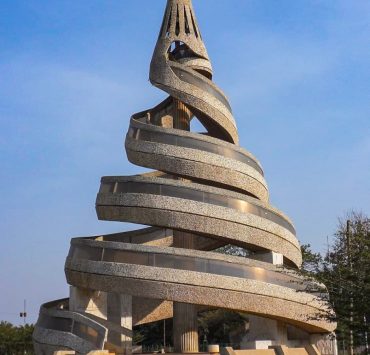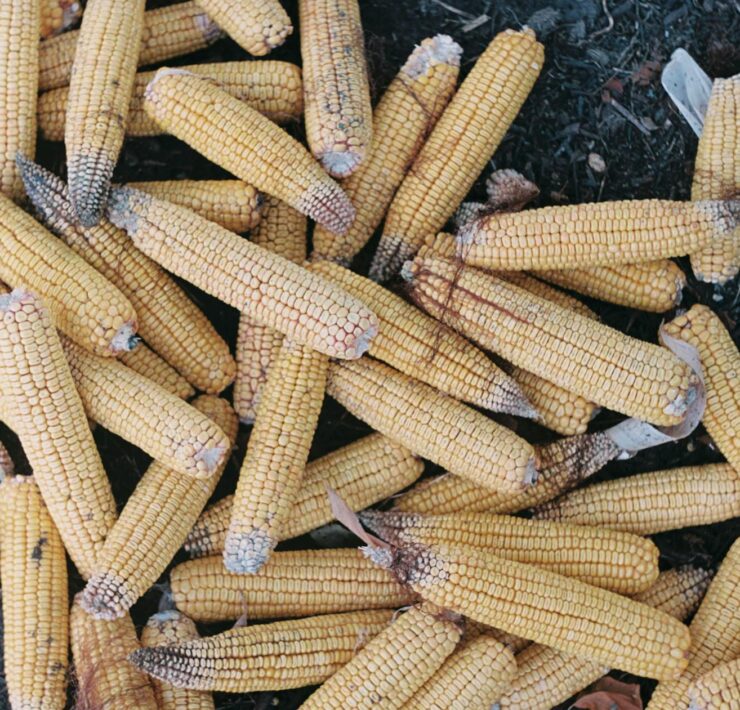
PD Lawton is a South African writer and researcher, committed…
Railway Infrastructure and Value Addition in Agriculture
Under the visionary leadership of President Muhammadu Buhari, Nigeria has become a key African partner in the Belt and Road Initiative. The benefits of Nigeria`s participation in the BRI are outlined in this article:
https://www.vanguardngr.com/2020/01/how-chinas-belt-and-road-initiative-affects-nigeria-africa/
President Buhari has said that Nigeria cannot be seen as an island, that the country will never have peace and prosperity while its neighbours live in poverty.
In saying that, he expressed the spirit of the New Silk Road, the Belt and Road Initiative, and the ethos of a shared future for mankind.
It is for that reason that President Buhari has championed extension of the railway into Niger.The Nigerian Railway Modernization Project will revolutionize national and regional trade.
The railway network will be extended to Maradi in Niger which is one of the landlocked neighbours along with Burkina Faso and Chad who currently only have road access to sea ports in Accra in Ghana, Cotonou in Benin and Lome in Togo. In September 2020, the Nigerian government announced the funding of $1.9 billion to construct the 250km line from Kano to Maradin, a village in Niger. In Maradin, warehouses will be built for cargo.
As of the 12 January 2021 the contract for the $1.9 bn line from Kano -Maradi has been signed with Portuguese construction firm Mota- Engil.
For centuries the trans-Saharan trade route went from Maradi to Kano and was prosperous until colonialism and more recently destabilizing forces changed such fortunes. The original city of Maradi is ancient , dating back thousands of years to the time of the Silk Road.
The remaining section from Maradin to Maradi will be financed and built by Niger.The contractor for the Nigerian line is a Portuguese company (Mota-Engil). The line is being financed by two European banks.
The government has been heavily criticized for extending the rail network beyond its borders.The Kano-Maradi line goes from the northern capital, Kano, across the border into Niger to the town of Maradi which has a population of 267,000.
The critics say that Niger has nothing to offer. There are cities in Nigeria that have a higher income than the entire Niger State, which is geographically larger than Nigeria but mostly desert and desperately poor.The critics say why help Nigeriens when Nigerians are suffering ? The government is being accused internationally of trying to capture the trade that currently goes to the port of Cotonou in Benin and of favouring the Muslim north of Nigeria to garner popularity for President Buhari`s APC ( All Progressives Congress) party. So why extend the line to Niger?
Because Africa must unite.
Apart from gold deposits, Niger is considered to have only one asset, uranium.Since 1968, Areva, an 80% French state-owned corporation has obviously been the main beneficiary in a partnership which is definitely not `win-win`. Niger is the 4th largest uranium producer globally. It has high grade deposits. Areva ( now called Orano)pays 5.5% tax and royalties to the Nigerien government. When asked to raise this pathetic ammount, the extraction plant ceased service for a number of weeks and the tax rate remained unchanged.
Mining in Africa is dominated by the City of London extractive interests. The level of tax and royalties paid to government is consistently low. Glencore Xstrata is one of the main culprits
Uranium is mined near the towns of Arlit and Akokan, 1200 km northeast of the capital, Niamey, on the western range of the Air mountains. The mined ore is transported by truck 1600 km to Parakou in Benin, from where it is transported by rail, 400 km to Cotonou Port and then exported.
Between them, Niger and Namibia, two of Africa`s most arid and impoverished countries, could be supplying all of Africa`s uranium, not if, but when, the continent turns to nuclear power. However, uranium should not be regarded as Niger`s primary asset. Instead we should regard the 23 million Nigeriens as the source of true wealth because it is they, given the creative freedom from absolute poverty, who have the potential to transform the economy of their country.
The African Development Bank is funding a program to strengthen Niger`s rural economy. Food shortages, malnutrition and outright starvation are a permanent situation for the majority of Niger`s rural population. In 2013, only 8% of the population had access to electricity. 82% had no access to sanitation. As of 2020, 15% of people have electricity. According to World Data, Niger has an annual energy consumption of 1.07 billion kWh which is 46kWh per person per year. Life expectancy is around 60. There are no railways at present.
If China has elliminated absolute poverty in one of its poorest and dryest regions, the Uygur Region, there is no reason at all why it cannot be done in a country like Niger, provided that Africa as a whole, adopts the Chinese methods of developing the physical economy.
Niger is a partner in the BRI. On a State visit to Beijing in 2019, President Mahamadou Issoufou and President Xi Jinping agreed to strengthen ties within the framework of the Belt and Road Initiative,stressing the importance of carrying out key projects in infrastructure, people’s livelihood, energy and agriculture. China has also committed to assisting Niger with technology and skills transfer in all fields including building a modernized health care system.
http://www.xinhuanet.com/english/2019-05/28/c_138097788.htm.
NUCLEAR ENERGY FOR NIGERIENS
To the critics of the Kano-Maradi railway we can say that maybe `today` Niger has little to offer but `tomorrow` it will be the Sahelian Region`s largest energy exporter and it will be Niger that powers industry from Mauritania to Sudan!
In 2015, as part of the Niger Renaissance Programme, the government hosted a conference in Niamey, capital of Niger, to initiate a national nuclear power program under the umbrella of the West African Integrated Nuclear Power Group (WAINPG) to study the feasibility of regional nuclear power capability.
The Nigerien High Authority for Atomic Energy (Haute Autorité Nigérienne à l’Energie Atomique (HANEA) have submitted Phase 1 of the feasability study to the IAEA. This was done in 2018. Japan has assisted in the funding of the proposal.
IAEA -Niger: Integrated Nuclear Infrastructure Review (PDF)
Niger, despite being arid. does have plentiful rainful around the Niger Delta but the rain is torrential for a period of weeks often leading to flooding. The government have built dykes but even these failed recently under the volume of water. Not only did this cause loss of life, homes and livelihoods for thousands, but many rice fields and granaries were ruined further contributing to food shortages.
NIGER AND BEYOND
The African Integrated High Speed Rail Network ( AIHSRN) includes a link from Lagos to Algiers which will directly link the Gulf of Guinea to the Mediterranean. The route traverses Niger which will be of immeasurable value to the economy of Nigeria, Niger and Algeria and will contribute greatly to the stability of the Sahel region.
Nigeria’s Minister of Transportation, Rt Hon Chibuike Rotimi Amaechi, conducted many interviews with the Nigerian press during the this year`s 60th Independence Anniversary in which he said:
“Last week, we awarded the contract for Kano to Maradi and people were screaming why are we taking it to Niger Republic. It’s important to take it to Niger because of economic reasons. Most coastal territories in Africa are competing better than us in terms of cargoes coming from not the hinterland, the landlocked countries. “We decided to join the market and compete so that we can make our seaports very viable. We decided to introduce the Kano-Maradi rail so that we can convey their goods from Maradi (a boundary village) to our ports with ease. I don’t know why people are screaming about it. It’s about economics, not politics.
You should know that railway generates employment and that as you move from Kano to Maradi you’re going to to go to Kano, Dutse, Kazaure, Daura, Katsina, Jibia before you get to Maradi, imagine the number of persons that you’ll create jobs for just at the beginning of the construction. “At the end of construction, imagine the number of businesses that you can site along with that area just because there is transportation. So when you talk about timing, poverty doesn’t have timing, unemployment is causing insecurity and banditry is a product of poverty, not just lack of education. So you have to find an alternative to those who participate in banditry. “So what we are trying to create is a source of growing the economy of Nigeria and creating opportunities for those who want to do real business, so they’ll be able to move their manufactured goods and reduce the cost of production around that area. That’s what we are trying to do.”
NIGERIA`S NATIONAL MODERNIZED RAILWAY NETWORK
The Nigerian Railway Modernization Project, will connect Lagos in the south west to Kano in the far north, by standard gauge railway.The modernized national rail network is around 3000 kilometers in length and of standard gauge. It will connect all major cities and link to the ports. The network will link to Niger.
It is replacing and expanding on the old colonial era narrow gauge system which was slow, inefficient and by 2013 all but collapsed with only the Lagos to Kano ( south to north) line operational. The average speed was 45km/h and the journey took 31 hours. With the completion of the Lagos-Ibadan line, that leg of the journey now takes less than 2 hours!
In 2006 an agreement was signed with the China Civil Engineering Construction Company for $8.3 billion. The entire project will cost $36 – $40 billion.The CCEC has, over the last years, constructed the Abuja-Kaduna Railway , Abuja Mass Transit Railway, Itapke-Warri Railway and now the Lagos-Ibadan line. The project, which is funded by China`s Exim Bank and the Nigerian government, is being built in segments to spread the cost over time.
The new metro light rail system in Abuja will be connected to the National Rail Network. Abuja Airport is also connected to the new metro network and the city centre (Abuja’s Central Business District). The Abuja Metro is the first light rail system in West Africa. The metro relieves traffic congestion, is reliable, fast and safe, and cheaper than local taxis.The metro will link Abuja with the towns of Nyanya, Kubwa, Mararaba and Lugbe in the near future.
Expansion is planned for the ports at Lekki and Bonny to make them deep water harbours of between 17 -18 metres deep. A new river port will be built at Warri and Ibom.
Lekki Port expansion is under construction. It will be Nigeria`s deepest sea port and is situated in the Lagos Free Trade Zone. It will be one of the most modern in West Africa. Minister of Transport, Chibuike Rotimi Amaechi, has tasked the project managers with commencement of commercial activities by 2022.
The Port Harcourt-Maiduguri rail line will link the north eastern region to the eastern sea port of Bonny which has been approved already, work will commence soon. From Bonny the line will go to Port Harcourt – Aba- Umuahia – Enugu – Makurdi – Lafia – Jos – Kafanchan – Bauchi – Gombe – Damaturu, and Maiduguri, with a spur from Port Harcourt to Owerri.
According to the Transport Minister Amaechi :
“Where we have about two seaports or river ports in Port Harcourt, you’ll be able to transport a lot of Iron Ore deposits from the North East through the Port Harcourt – Maiduguri rail. The completion of this project which we hope that if it doesn’t start this year, will start the first quarter of next year, the completion, will move cargo, create employment, create industrial development and it will grow the economy.”
Transport Minister Amaechi explained that ports and rail work together:
“Currently, Nigerians move about 30 million cargoes between Lagos and Kano in a year. The capacity of the Nigerian Railway Corporation as of today is about 200,000 cargoes per year. That’s appalling. So, if you want to make the factors of production to be cheap and make our goods competitive, then you must provide logistics, either the road, by air or by railway. But the cheapest form of transport in this regard is the railway because it’s subsidised by the government. So the idea of complying with the instruction by the president that all railways must terminate at the seaport is because you want to move your cargo. The moment you begin to move cargo, you’ll see the transformation. The movement of cargo will improve the industrial development of Nigeria.”
The Lagos to Calabar line will run along the coast. It will be 1,400 km and will link all the key sea and river ports.It will run from Calabar – Uyo – Aba – Port Harcourt – Yenogua – Otuoke – Ughelli – Warri – Sapele – Benin – Ore – Ijebu-Ode – Lagos.
The Abuja to Kaduna rail line is completed and in service since 2016. It is 186km long. Itakpe-Warri line is completed which is 326 kilometres long.
The Lagos-Ibadan line is the first double-track standard gauge modern railway in West Africa.It is 156km long. Track-laying of the high speed standard gauge railway from Lagos to Ibadan was constructed by the China Civil Engineering Construction Corporation (CCECC). The project was started in March 2017. The line is now in service and has 10 stations.
 PIN IT
PIN ITThe main station is in Lagos and will act as the operations centre as well as a passenger terminus. Initially 3 pairs of trains will run each day. The maximum capacity that the project is designed to accommodate is an incredible 15 pairs (inward and outward bound) per day!
The building which is still under construction, will be a colossal 11,200 square meters. It will be the largest railway station in West Africa with a capacity for 6000 passengers. It was hoped that the building will be completed by the end of 2020.
Investment in infrastructure leads to the growth of ancillary industries. In the case of the Nigerian Railway Modernization Project, a new factory in Kajola, Ogun Province is just one example. The factory will bring an initial 5000 jobs and will be manufacturing the rolling stock for the new, modernized railways. It will then proceed to supplying the rest of West Africa and beyond!
This rolling stock, the carriages, are super modern. Each compartment is not only luxurious and spacious but is also equipped with phone charging facilities for each seat. There are overhead luggage compartments, tables, adjustable seats, bar and restaurant facilities and each compartment has a television screen.
Nigeria: Value Addition in Agriculture
In 2015, Nigeria initiated the Value Chain Development Program that is improving cassava and rice value chains for small farmers in targeted districts The program aims at increasing productivity in the staple sector, increasing food production and thereby reducing poverty.70% of Nigerians live in rural areas and are small farmers who produce 90% of the nation`s agricultural products. Dire poverty in Nigeria is mostly in rural, agriculture-based communities and it is these communities that the government are targeting.
According to the Nigerian Statehouse website:
Economic Recovery and Growth Plan
“The Economic Recovery and Growth Plan (ERGP) is a Medium Term Plan for 2017 – 2020, developed by the Administration of President Muhammadu Buhari for the purpose of restoring economic growth while leveraging the ingenuity and resilience of the Nigerian people – the nation’s most priceless assets.”
The program aims to put the oil-based economy on an entirely different trajectory to transform the economy and thereby alleviate poverty.Key components are the Nigerian Railway Modernization Project which is part of the Nigeria Integrated Infrastructure Master Plan which includes the construction of new, or modernization of existing, ports, bridges and road networks.
According to the Statehouse website:
“This Plan will use science, technology and innovation to drive growth. It also provides a blueprint for laying the foundation for future generations by focusing on building the capabilities of the youths of Nigeria to be able to take the country into the future.”
“Using agriculture to achieve food security, create jobs and save foreign exchange for food imports. Plans are already in place for national self-sufficiency in rice by 2018 and wheat by 2019/2020. Successful harvests will contribute in reducing inflation and promoting economic diversification.”
The Nigerian Agricultural Transformation Agenda was initiated in 2013. It is a program to alleviate rural poverty and increase production.Since the discovery of crude oil, IMF`s globalist policy has been to advise on oil export and food import which over the years harmed the country`s agricultural industry with cheap foreign imports having a negative effect on domestic production.
Rice self-sufficiency had reached 84% by start of 2019. Government and private sector initiatives have provided support,credit,training and seed, along with even distribution of rice milling (polishing) plants across all regions.
Mechanization solutions and the case for small modular processing plants are some of the innovative ideas being pushed by Richard Ogundele, CEO of JMSF Agribusiness Nigeria, a key player in the agricultural transformation program. According to him:
“Another thing that we could see working here, is SME (Small and Medium Enterprises) branding. The farmers who grow them and the processors at that lower level, need to understand quality assurance from the start to the market end. And that`s where branding comes in, packaging, handling,storage and distribution. So opportunity for logistics is also there. Logistics in agriculture is still a challenge across Nigeria, storage, transportation, packaging, handling. We need improvements in this value chain service provision area. So if anyone is interested in this sector, we can always guide them and talk it through. And of course there will be the multiplying effect on the economy because more jobs will be created along the value chain for those who will be offering services to the core operations within the sector.”
Infrastructure, including water infrastructure, is having an immensely positive effect on production.
Rice is the Nigerian staple. Local Nigerian varieties of rice are found to be of a higher nutritional value than imported rice.The local rice is not as highly polished which increases nutritional value and it consumed fresher compared to imported rice which can be many years old.
Nigeria`s self-sufficiency policy has caused `rice wars` with international exporters flooding the market with super cheap, low-quality produce. This has resulted in a series of protests from within the country as people demand cheap rice. It has been difficult for the government to convince the nation that by supporting the domestic market, they will have a better product which will become cheaper over time as production increases.
The black-market for rice is a continuing problem as Nigeria`s expansive borders are porous and rice is routinely smuggled across from Benin.
In September 2020 the government stopped tomato imports and has adopted a similar tactic to boost tomato production by value adding and processing into puree, thereby supporting domestic tomato growers and to encourage job creation.
The Nigerian government recently announced the release of funding for 300,000 new affordable homes which are to be built with 90% local materials, further supporting the national economy.
Subscribe now for updates from Msingi Afrika Magazine!
Receive notifications about new issues, products and offers.
What's Your Reaction?
 PIN IT
PIN ITPD Lawton is a South African writer and researcher, committed to the restoration of Africa to its rightful place in the world.





















